If you ask us, Canada has a pretty good system worked out for its roadways. They’re often referred to as the antithesis of European roads, with their width, their straightness, and these things called posted ‘speed limits’ (here’s lookin’ at you, Autobahn). You could even say that roads have their own intricate language, spoken through signs, alerts, warnings, lights, and perhaps most common - road lines.
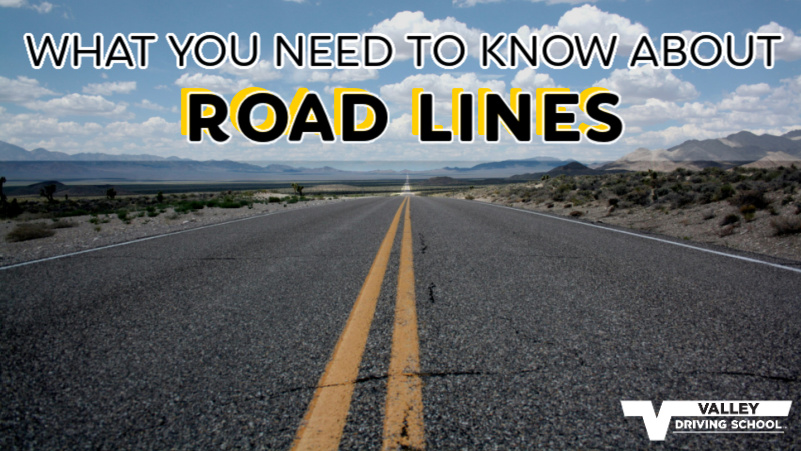
The lines on the road are communicators of safety, timing, approach, and spatial sense. They’re used not only to keep us on our own side of the highway and out of the oncoming lane, but help dictate where and when you may pass, and when you should only consider passing with extreme caution; and that’s just the yellow lines.
In this post, we’ll help you learn about road lines in British Columbia.
Yellow Lines In the Road
Yellow road lines mean, in some fashion, that the roadway is used for traffic moving in opposite directions. When you see a yellow line, you can usually expect to see traffic coming toward you in the other lane.
|
Single Broken Line A single broken yellow line means that passing is allowed by drivers in lanes travelling in either direction, when safe  |
|
|
Single Solid Line Means that passing is allowed in both directions - with extreme caution. This may be because of a narrower roadway, frequent rises and dips in elevation, or even frequent turns and curves with limited visibility. 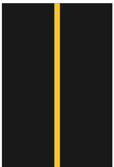 |
|
|
Broken Line And Solid Line Together Dictates that the drivers on the side of the broken line may pass when it is safe to do so. The drivers with the solid line on their side of the road may not pass. 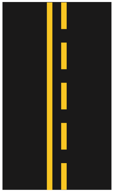 |
|
|
Double Solid Line Absolutely no passing is permitted in either direction. 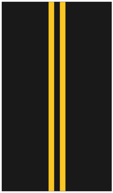 |
|
|
Double Broken Line Lesser seen, a double broken line means that the lane is reversible. A lane control signal or light will communicate to drivers whether they may use the lane or not. Commonly seen in busy city centres on one way streets; lane signals can change the direction of traffic during heavily congested times, or daily at certain times of night to help alleviate gridlock. 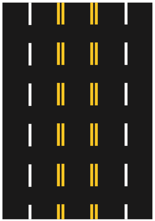 |
|
|
Two-Way Left Turning Lane Used by drivers heading in opposite directions, these turning lanes are frequently seen in heavily congested areas where traffic can’t be slowed for a left hand turn. Drivers in both lanes must share these lanes that are marked by white left-hand turning arrows. The lanes can feature either a solid line or a broken line closest to traffic, and may be reversed. These lanes have gained the nickname “suicide lane” as many people enter the lane too early. Drivers should enter the lane as closely to where they intend to make the turn as possible. Remember – these lanes cannot be used if you are entering from a side road. You must completely clear the two-way left turn lane - you cannot wait in this lane to then make a right turn, to then enter the flow of traffic. 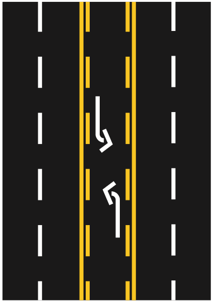 |
|
|
Painted Island A yellow island of space that is signaled by diagonal thick yellow lines. Always keep to the right, and do not drive on or over the island. 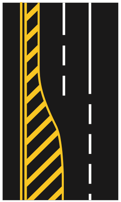 |
White Lines Road Lines
White lines in the road always mean that traffic is moving in the same direction. You may notice when you need to make a left turn into a parking lot or to make an exit on the freeway that the lines are white. White lines are also used as safety measures in BC and across Canada to mark pedestrian crosswalks.
|
Single Solid Line Lane changes are not permitted, including HOV lanes. You may cross over these lines when entering or exiting a roadway, like when leaving your driveway, for example. 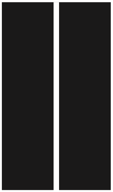 |
|
|
Single Broken Line Lane changing is permitted when it is safe to do so.  |
|
|
Thick White Stop Line A white line that is commonly seen before pedestrian crosswalks and at stop signs to signal to drivers to stop before the line. These lines run perpendicular to standard road lines. 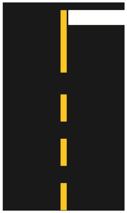 |
Crosswalks
Pedestrians have to use the roads as well. Crosswalks are seen at intersections, and sometimes at pedestrian activated crossings at other sections of road. They too are marked by white road lines, and can mean different things - but all mean stop for pedestrians when pedestrians are waiting to cross or when lights at the crosswalk have been activated.
|
Slotted Pedestrian Crosswalk Stop for pedestrians at the crosswalk. The slotted nature of the crosswalk lines mean that they run parallel to the standard lane lines, and are not bordered by a solid perpendicular line. 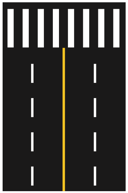 |
|
|
Solid Pedestrian Crosswalk Same as a slotted crosswalk, but only a border marks where pedestrians may walk. Stop for pedestrians. 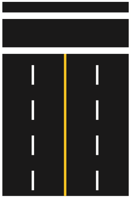 |
|
|
Pedestrian Activated Crosswalk With Illuminating Lights Same as a slotted pedestrian crosswalk, but accented by illuminating lights in the pavement at either end of the white markers. The lights signal that the crosswalk has been activated by pedestrians seeking to cross the street. Stop for pedestrians when the lights are activated. 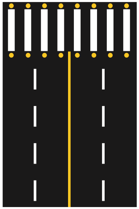 |
|
|
Reserved Lanes Reserved lanes are marked off sections of roadway used by High Occupancy Vehicles (HOVs), buses, motorcycles and bicycles. Some even allow electric vehicles. They are signaled by thicker white lines and white diamond shapes. Signs and markers will signal to drivers which types of vehicles may use the lane. General traffic is not permitted to use these lanes unless marked so by time. 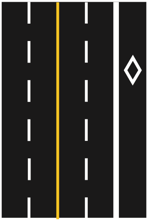 |
|
|
Bicycle Lane For cyclists only. Signaled by a thick white line and a white bicycle outline, and sometimes a white diamond. Cyclists in these lanes may only travel in the same direction as traffic in their lane. At intersections, look both ways as some larger, separated bike lanes may allow bicycles to travel in both directions. Bicycle lanes may also be green throughout the lane and crosswalk area and show a slotted pedestrian crosswalk and/or solid pedestrian crosswalk bordering the lane. 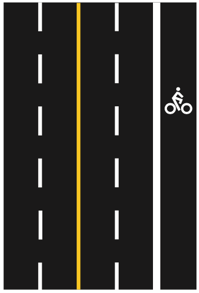 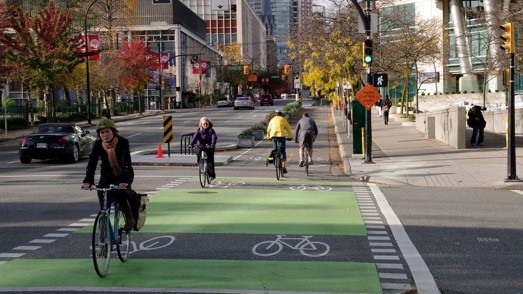 |
----
These different types of road lines help to keep traffic moving smoothly and safely in British Columbia. Without these road lines, drivers could have difficulty knowing where and when it is appropriate to pass other vehicles, change lanes, and/or stop for pedestrian crossings. It’s important to know what each line means so that we can contribute to safer roads for everyone.

